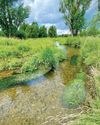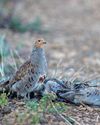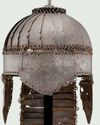Cotherstone Moor Co Durham

FOLLOWING the narrow road above Balderhead Reservoir towards the heart of Cotherstone Moor reminds me of Talking Heads’ 1980s single Road to Nowhere, but then I pull into an isolated farmyard and discover rows of parked vehicles together with a swarm of beaters, keepers and picker-uppers preparing for an autumn driven grouse day. There are 33 different members of shoot staff one way or another, which is testament to the economic benefits generated by grouse moors in the remoter parts of Britain – and that’s without taking into account the impact visiting guns have on local businesses that include public houses, village shops and garages.
Cotherstone Moor in Co Durham is owned by the writer Viscount Ridley, who is also president of the Moorland Association. His estate extends to some 6,000 acres of white grass and heather moorland within a Site of Special Scientific Interest that is home to hen harriers, more than 200 breeding pairs of curlew and one of the healthiest blackgame populations anywhere in Britain. Much of this is thanks to the ongoing conservation work of local man Mark Gallagher, who came to Cotherstone as underkeeper in the millennium year before being promoted to the position of headkeeper in 2008.
Gallagher, who is also an energetic hill walker (last year, he managed to climb all 254 of England’s Nuttalls together with the Lake District’s 214 Wainwrights by Christmas), explains that the moor is capable of providing up to 20 driven grouse days in a really good year. “Although last year was a poor breeding one for grouse, things have been much better this time, with an average brood size of seven when we did our July counts,” he says. “This will be our eighth day so far this season.”
Denne historien er fra October 2023-utgaven av The Field.
Start din 7-dagers gratis prøveperiode på Magzter GOLD for å få tilgang til tusenvis av utvalgte premiumhistorier og 9000+ magasiner og aviser.
Allerede abonnent ? Logg på
Denne historien er fra October 2023-utgaven av The Field.
Start din 7-dagers gratis prøveperiode på Magzter GOLD for å få tilgang til tusenvis av utvalgte premiumhistorier og 9000+ magasiner og aviser.
Allerede abonnent? Logg på

Something to chew over
Many foods are toxic to canines, and most owners know to avoid feeding them to their dogs. But when accidents inevitably happen, common sense is key, says

The Nevill Arms
Set in Leicestershire's Welland Valley, this boutique hotel and pub blends original character and contemporary chic with impeccable countryside credentials

Protecting our way of life
How BASC is fighting for the future of shooting - and how you can help

'Here today, gone tomorrow'
With its cryptic plumage, striking beak and curious drumming behaviour, the snipe is a fascinating bird that has captivated sportsmen for generations

Farmers need a helping hand
Britain’s farmers are ready to deliver on food security and biodiversity. However, sustainability comes at a cost – one they cannot bear alone, says

Fabarm Autumn Elite 20-bore
Italian proofed for steel shot and handling much like an over-and-under, this smart side-by-side has been designed with the future in mind, says Michael Yardley

Reinventing Arcady
With chalkstreams coming under increasing pressure, it's time to step away from the traditional and manicured and let our rivers breathe

Conservation wins
Now open for 2025 entries, the Purdey Awards recognise the outstanding game and habitat conservation work carried out by shoots across the UK

Driven to distraction
The prospect of swapping arms and armour for automobiles at auction leaves Roger Field feeling rather daunted. Meanwhile, a celebrity sale attracts fans and bargain hunters alike

Championing our canine kings
As The Field Top Dog Awards launches for 2025, searching for the best of our canine companions, Agria Pet Insurance is proud to announce itself as one of the sponsors
